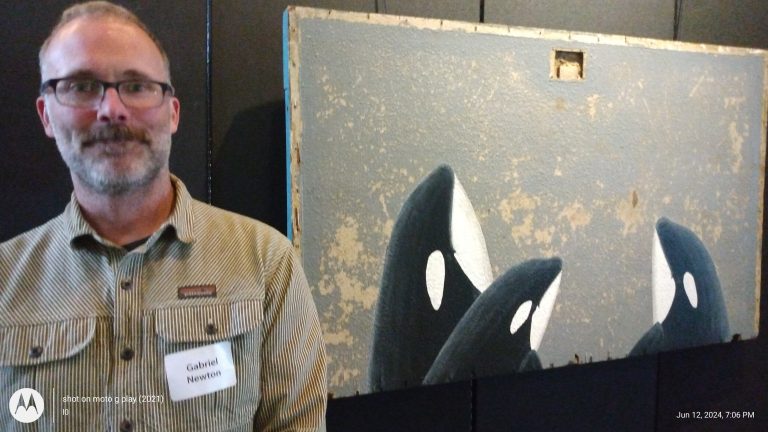An art exhibit in Seattle is highlighting the dire situation for orca off the coast of Washington.
The show, called SUPER POD: All Together features all the members of the endangered Southern Resident orca pods.
Gabriel Newton, the artist behind the project, painted the whales in acrylic on 45 pieces of wood found on the shores of the Salish Sea, where the whales travel and feed. He said the whales are struggling to hold on.
“It was inspired by wanting to raise awareness around the plight that they’re in and the lack of food that they’re experiencing,” Newton explained. “And to motivate people to take action to help the orcas recover.”
There were 74 members of the Southern Residents left when Newton started the project but a recent population analysis found there are only 72 left. Newton argued removing dams on the lower Snake River would allow more chinook salmon, which are the whales’ main food source, to travel to the Pacific Ocean. The exhibit opens at the A/NT Gallery at Seattle Center Aug. 1.
Deborah Giles, science and research director for the nonprofit Wild Orca, said the lack of prey is the biggest issue for the Southern Resident orcas. She stressed drastic action is needed to save them, including curtailing fishing to ensure they have enough food.
“These whales are not recovering, and they’re not recovering because we’re not taking serious enough action with regard to fisheries management,” Giles contended. “That’s the bottom line.”
Newton added it is critical to save the killer whales and salmon, not just for them but for us as well.
“Anytime a thread in the web of life is broken our own capacity to thrive is reduced,” Newton asserted. “I view orcas and salmon as both very integral threads.”
Featured photo: Artist Gabriel Newton used acrylic on found wood to paint Southern Resident orcas, which feed in the Salish Sea. (John Rosapepe/Endangered Species Coalition)

